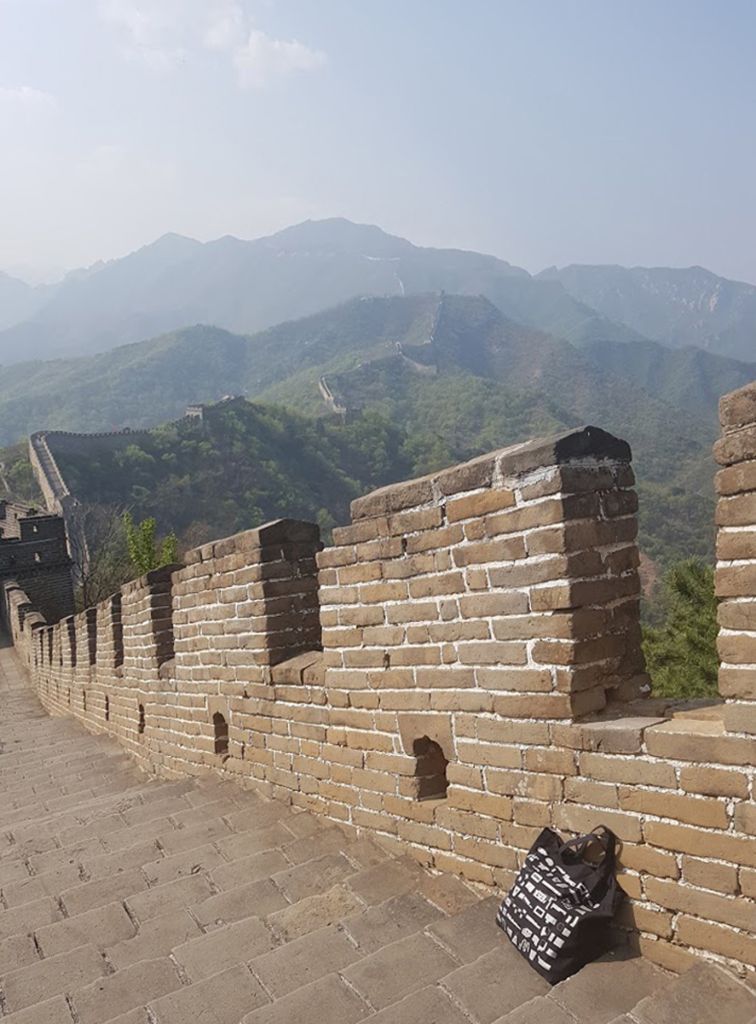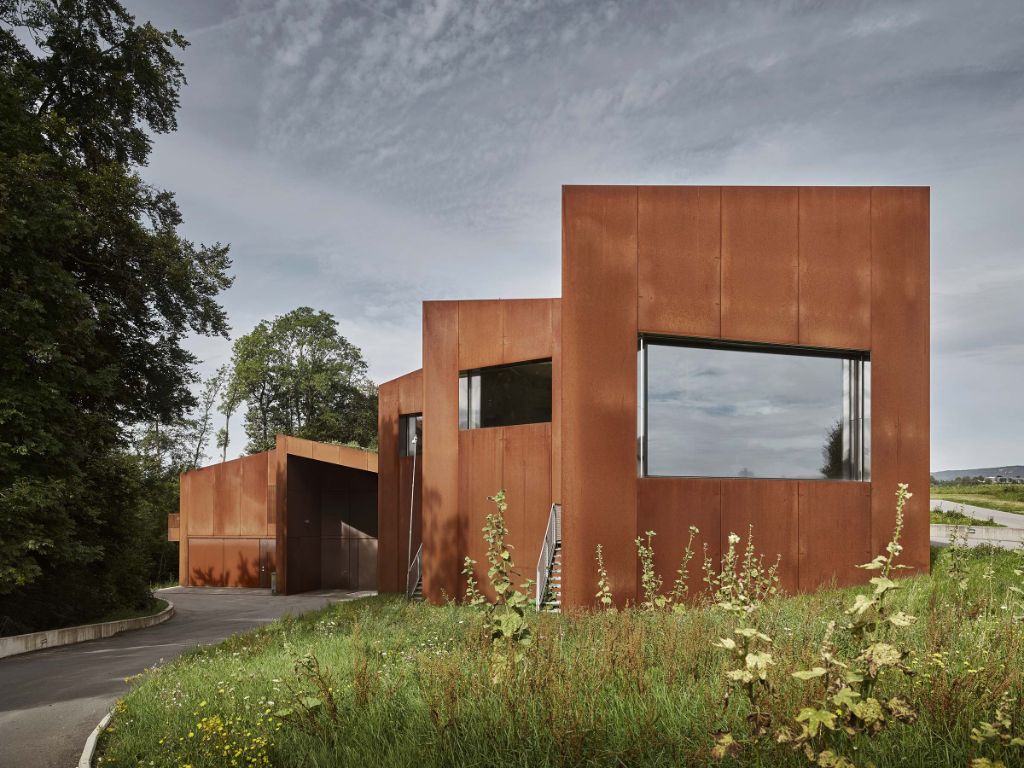New Museum of Natural History Basel and State Archives Basel-City
Bringing together the State Archives and the Museum of Natural History at a single location creates a unique storehouse of information that combines knowledge about nature and culture. The elongated site along the railway line is occupied by an additive series of building volumes that increased in density towards Vogesenplatz and ends with a slender tower at the Luzernerringbrücke. The tower is an urban symbol that stands for both institutions and anchors the knowledge storehouse beside the tracks, on Vogesenplatz and in the city as a whole.
The principle of joining and layering forms the general urban and architectural leitmotif. The subtle staggering of the building volume is given emphasis externally by the very physical quality of the materials used for the walls. The plinth, entrance area and the State Archives on the top floor are characterized by exposed concrete and glass. The other horizontal surfaces consist of areas of brickwork layered in different shades of colour to create an image of sediment-like strips.
A generously dimensioned entrance hall strengthens the joint presence of both institutions. In visual terms this foyer, a spatial vessel open to the outside, brings outdoor space into the hall. The question about the individual identities of the institutions is of central importance: both functions are clearly perceptible and identifiable by the unambiguous allocation of spaces within the overall system. Each institution has a symbol-like entrance hall as an address. Together with the shared entrance hall, the tower hall of the State Archives and the staircase hall of the Museum of Natural History form a triad that is harmoniously balanced in terms of space and content.
The State Archives extends along the entire length of the building in the form of a glazed top floor that offers a view of the city. The circulation system running through the 18-metre-high hall in the tower links the plan counter on the ground floor with the reading room area at roof level, both spatially and visually. By means of large openings to the outside and the inside this representative interface space connects the State Archives with the functions of the museum and with the new arrivals area at the Luzernerringbrücke.
The rooms of the museum are on the floors below. The idea of the museum as a storehouse of knowledge is given a concrete physical and architectural structure by the concept of a wide-spanning, twin-storey shelf. As well as offering generous spatial qualities this structure also ensures a high level of flexibility and adaptability for the long-term operation of the museum. Two internal staircases allow the museum areas to be linked in different ways and suggest a number of possible tours. The staircases themselves are like spatial slices made through the various layers, which expose the museum’s varied program and enable visitors to experience it. They also allow a variety of visual relationships and proximities between the two interlocking institutions and a connection to the life of the city.
Visualisations: © Filippo Bolognese Images, Milan
Aerial photographs: © Erich Meyer, Hasel
Construction site photographs: © EM2N · Raphaël Klucker, Zurich
Model photographs: © EM2N, Zurich
Mock-up photographs: © EM2N, Zurich
Index: 210 BAS
Dates: Competition 2014 · Planning phase 2015–2021 · Expected construction phase 2021–2026
Team EM2N
Partners: Mathias Müller, Daniel Niggli · Associates: Fabian Hörmann (competition), Christof Zollinger (execution) · Project leaders: Kerstin Rienecker, Claudia Soppelsa-Peter · Project team (competition): Christian Deis, Georgios Eftaxiopoulos, Mathias Kampmann, Aljoša Kotnjek, Andrea Landell de Moura Stähelin, Krzysztof Marciszewski, Kim Schürmann, Lingkun Su, Hugo Torre, Caroline Vogel · Project team (execution): Isabel Ammann, Enis Basartangil, Diego Bazzotti, Kārlis Bērziņš, Szabolcs-László Bordas, Dario Bruhin, Béatrice Bruneaux, Tomasz Bulczak, Santiago Catanzano, Plamena Dimitrova, Nicolò Ercoli, Lluís Fernández Vila, Rodolfo Ferro, Jana Galovic, Marta García de Domingo, Jesús E. Gijón Carretero, Carol Hayman Kann, Anne Käppeli, Berta Keerl Ferrer, Raphaël Klucker, Yorgos Lavantsiotis, Loïc Lugrin, Anca-Teodora Lungu, Krysztof Piotr Marciszewski, Kamile Medolago, Danica Mijonić, Silvia Miralles Pérez, Francesca Mirone, Agata Morawczyńska, Maria Remma, Miguel Ruano Gullón, Theodoros Sandros, Lorenzo Semeraro, Domenico Spagnolo, Tomoko Suzuki, Gustavo Takata, Sandra ten Dam, Pauline Toenz
Model making: Jelena Bottani, Jennifer Bottlang, Gustavo Espinoza Campos, Joey Frei, Jonas Rindlisbacher
Specialist planners (competition):
Cost and project management: b+p baurealisation ag, Zurich · Civil engineer: Schnetzer Puskas Ingenieure AG, Zurich · Building services engineering / energy: ahochn AG, Dübendorf · Fassade planning: gkp fassadentechnik ag, Aardorf · Building physics / acoustics / energy / sustainability: Gartenmann Engineering AG, Zurich · Fire protection: AFC Air Flow Consulting AG, Zurich · Scenographic consulting: südstudio Hannes Bierkämper, Stuttgart
Specialist planners (execution):
Cost and project management: Ghisleni Partner AG, Zurich · Construction management: Structa Baumanagement GmbH, Zofingen · Specialist construction management: Amstein + Walthert AG, Basel · Civil engineer: Schnetzer Puskas Ingenieure AG, Zurich · Building services engineering / energy: ahochn AG, Dübendorf · Electrical services planning / Planning building automation: Pro Engineering AG, Basel · Sanitary services: SANPLAN Ingenieure AG, Lausen · Fassade planning: gkp fassadentechnik ag, Aardorf · Fassade planning engineer: ZPF Ingenieure AG, Zurich · Building physics / energy, sustainability: Gartenmann Engineering AG, Zurich · Acoustics: applied acoustics GmbH, Gelterkinden
Location
Basel, Switzerland
Procedure
Competition, 1st prize
Client
Canton of Basel-City
Year
2014–2026
Status
Ongoing
Program
Archives, Auditorium, Café, Delivery area, Entrance hall, Event spaces, Exhibition spaces, Laboratories, Offices, Readings rooms, Seminar rooms, Shelter for cultural assets, Storages spaces, Taxidermy department, Technical facilities, Visitors areas, Waste disposal rooms, Workshop spaces
Size
35,500 m²
(usable floor areas Museum of Natural History : 12,620 m², State Archives: 8,700 m², shared use: 1,030 m², in addition: 1,110 m²)

















































































































